Bringing a touch of nature indoors is more than just a passing trend—it’s a timeless approach to invigorating your living spaces. For both novice decorators taking their first steps into the world of interior design and seasoned experts seeking fresh inspiration, incorporating greenery can transform your home into a vibrant and inviting sanctuary. Plants do more than just beautify; they breathe life into your decor, improve air quality, and create a sense of tranquility that is hard to match with any other design element.
In this article, we’ll explore six common yet creative ways to integrate greenery into your interiors, making your home both stylish and serene. Whether you’re looking to make a bold botanical statement or subtly enhance your space with a few well-placed plants, these ideas are designed to be adaptable, ensuring that everyone can find a solution that suits their style and skill level. As we guide you through these options, you’ll discover practical tips and inspiring ideas that promise to elevate your home decor while making the process feel both rewarding and achievable.
Choosing the Right Indoor Plants
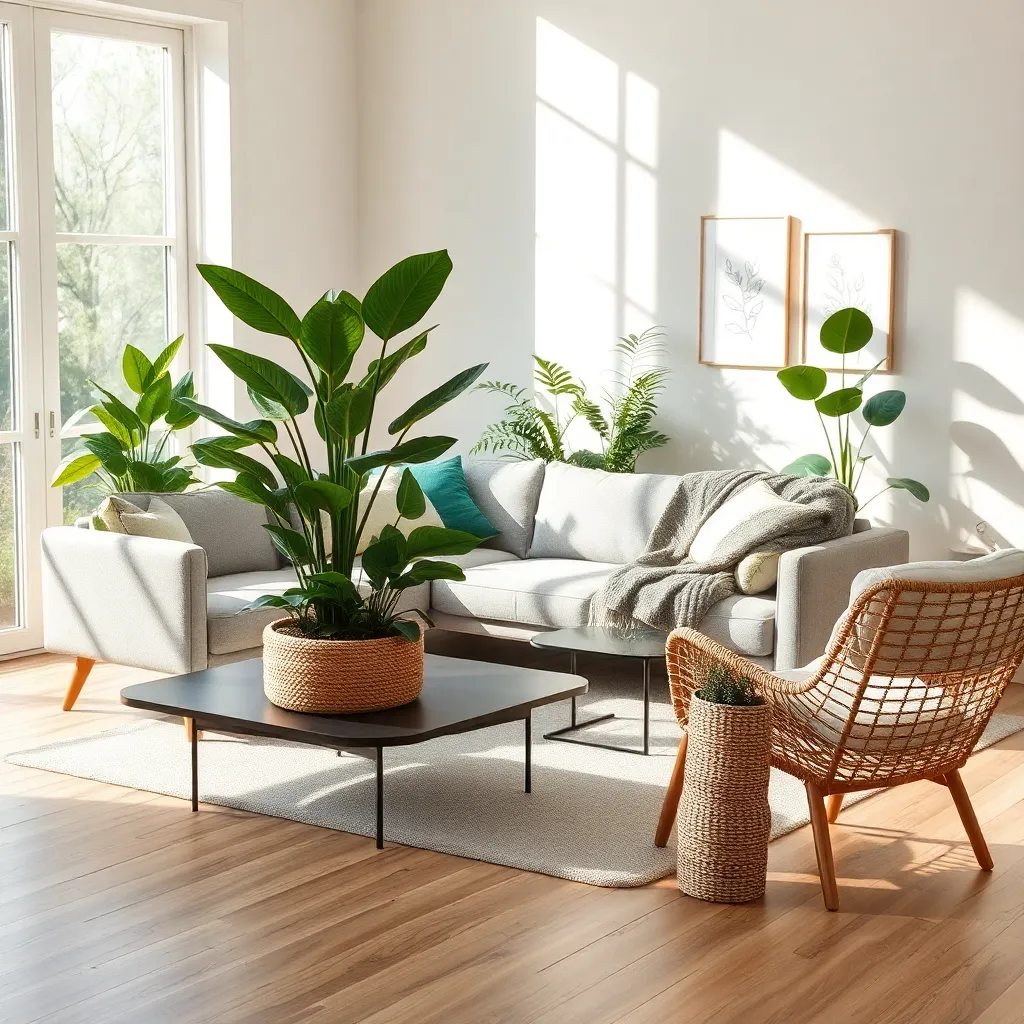
When choosing the right indoor plants, consider the lighting conditions in each room. For rooms with abundant natural light, plants like succulents and fiddle leaf figs will thrive, while low-light areas are perfect for hardy species like snake plants and pothos.
It’s also crucial to match the plant’s pot with your existing decor to create a cohesive look. Opt for neutral-colored pots in contemporary spaces or vibrant ceramics to add a pop of color in eclectic interiors.
For beginner decorators, starting with low-maintenance plants can boost confidence and success. Consider easy-care options like ZZ plants or peace lilies, which are forgiving and adaptable to various conditions.
Advanced decorators might explore grouping plants to create a layered, textured effect. Use varying heights and leaf shapes to add depth, placing taller plants like rubber trees behind smaller ones like ferns and succulents.
Positioning Greenery for Impact
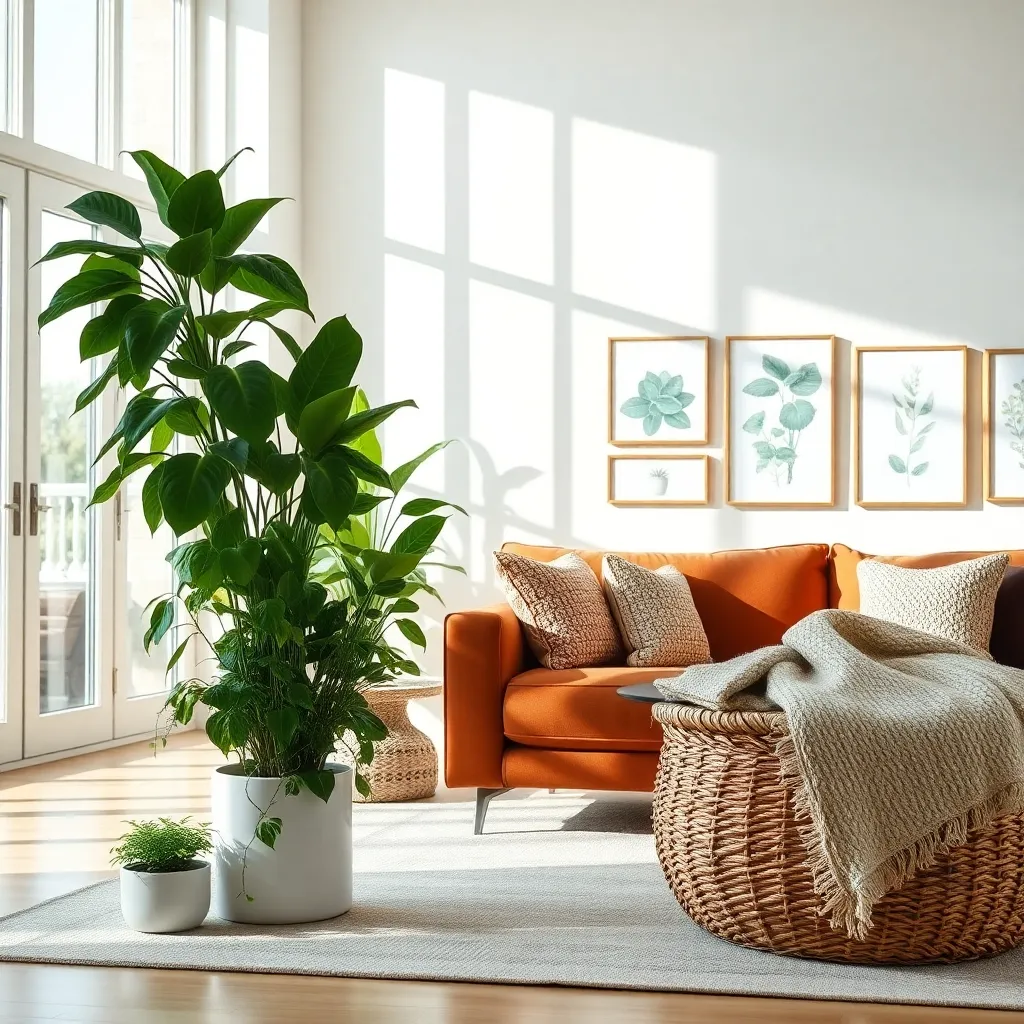
Positioning greenery strategically can dramatically enhance the aesthetics of a room. Place taller plants, such as fiddle leaf figs or rubber plants, in corners to draw the eye upward and create a sense of height in the space.
For a cohesive look, incorporate plants that complement your existing color scheme. Opt for plants with deep green leaves to contrast against lighter walls, or choose variegated species for neutral palettes to add visual texture.
Displaying plants at different heights adds layers and depth to your interior design. Use plant stands, shelves, and hanging baskets to vary heights, creating a dynamic and engaging visual appeal.
Consider the lighting needs of each plant when determining their placement. Group sun-loving plants like succulents near windows, while shade-tolerant varieties can thrive in lower light conditions.
Incorporating greenery into unexpected places can have a big impact. For instance, hanging a plant in the bathroom or placing a small herb garden on your kitchen windowsill can make these functional spaces feel more inviting and alive.
Integrating Plants with Decor
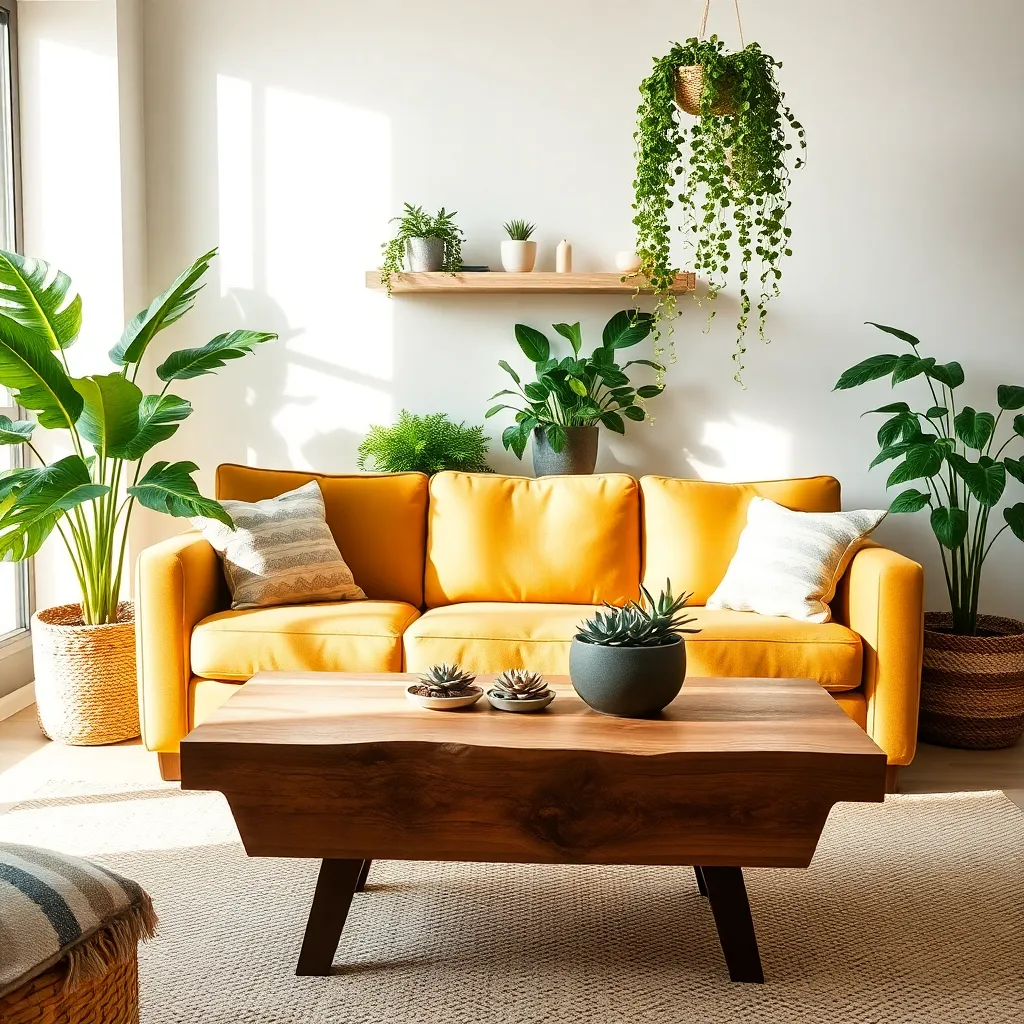
Incorporating plants into your decor can transform a space by adding both color and life. Choose plants that complement your existing color palette; for instance, the deep green of a Fiddle Leaf Fig pairs beautifully with neutral and earthy tones.
Instead of merely placing plants in corners, integrate them into your decor by considering their role as design elements. Use them to create visual interest by placing them at different heights; a trailing plant like a pothos can cascade from a shelf, while a taller plant can stand next to a low armchair.
Furniture selection is crucial when integrating plants; opt for pieces that allow for creative plant placement. Consider using side tables with lower shelves or open bookcases to showcase smaller pots and add depth to the room.
For those ready to explore advanced styling, experiment with plant grouping to create a mini indoor garden. Cluster plants with varying textures and sizes to create a dynamic and lush look, such as grouping succulents with a Monstera for a contrast in foliage and form.
Maintaining Indoor Plant Health
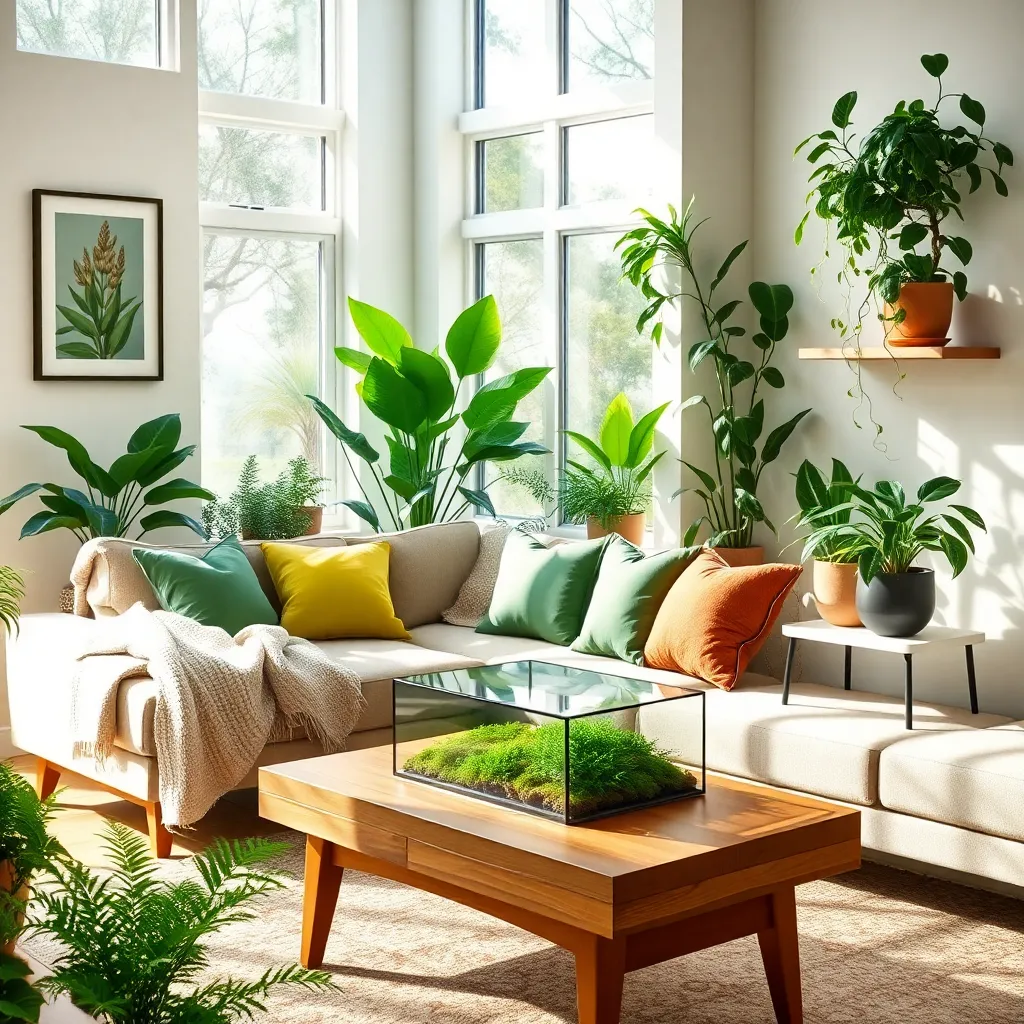
Plants are living decor elements that require regular attention to thrive indoors. It’s important to understand each plant’s specific needs, such as light, water, and humidity preferences, to ensure they remain healthy and vibrant.
When placing plants, consider the natural light available in different rooms. Position light-loving plants like succulents and cacti near south-facing windows, while ferns and peace lilies thrive in shadier spots.
Rotate your plants every few weeks to promote even growth and prevent them from leaning towards the light. This simple practice helps maintain a balanced appearance and enhances the plant’s overall health.
Maintaining the right moisture level is crucial for indoor plant health. Use a moisture meter or simply check the top inch of soil with your finger to determine when it’s time to water.
For more advanced care, consider grouping plants with similar humidity needs together to create a microclimate. This not only makes maintenance easier but also adds a lush, coherent look to your space.
Fertilizing plants during their growing season can significantly boost their growth and vitality. Use a balanced, water-soluble fertilizer every few weeks, but always follow the instructions to avoid overfeeding.
Using Planters as Design Elements
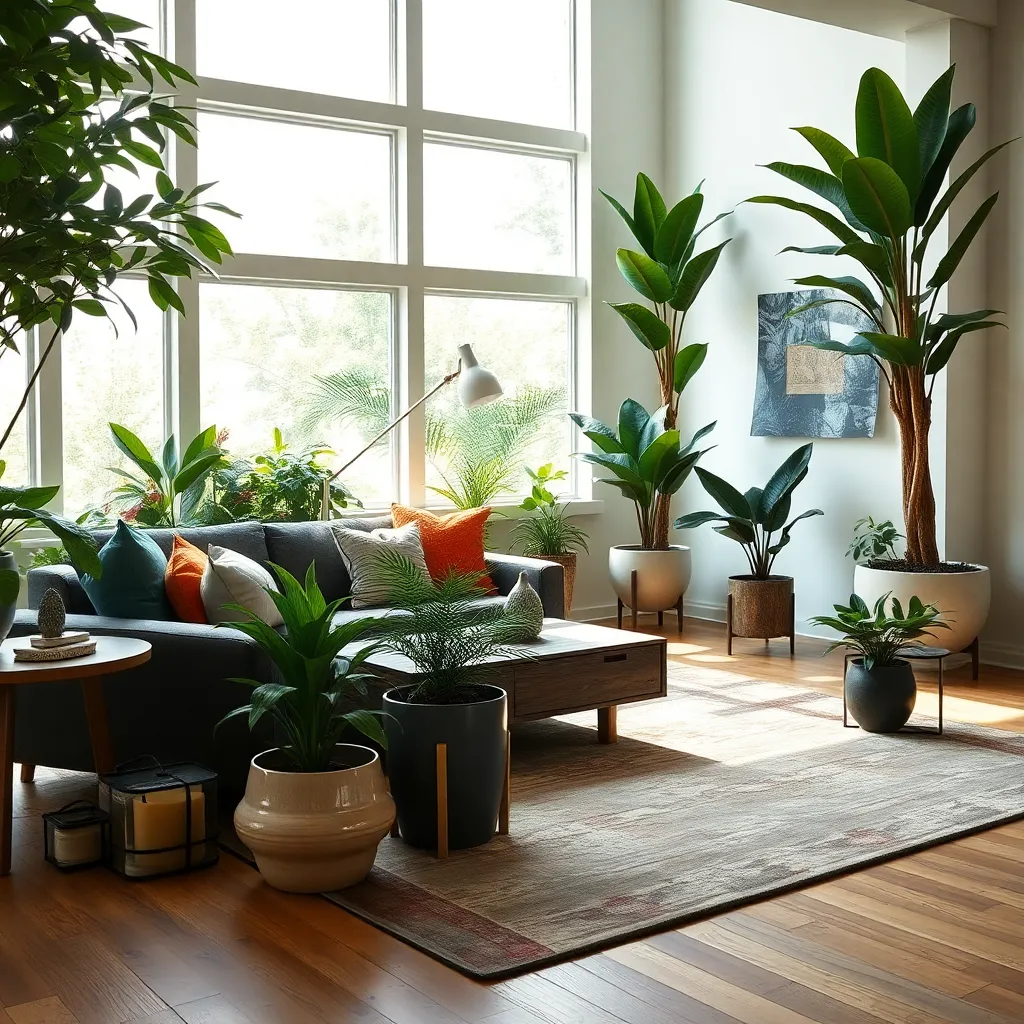
Incorporating planters into your interior design can significantly elevate the visual appeal of any space. Choose planters that complement your existing décor, whether that means selecting sleek, minimalist designs for modern spaces or ornate, textured pots for a more traditional setting.
Strategically placing planters can create focal points or define areas within a room. Position large planters near entryways or corners to draw the eye and add height, while smaller planters work well on shelves or tables to add layers and depth.
For a cohesive look, consider the material and color of the planters in relation to your room’s palette. Metallic planters can add a contemporary edge, while ceramic options might offer a softer, more artisanal touch, making them suitable for bohemian or rustic interiors.
To maximize visual impact, mix different sizes and styles of planters within a space. This technique not only adds variety but also creates a dynamic look that keeps the eye moving around the room, enhancing the sense of space and interest.
Creating a Green Focal Point
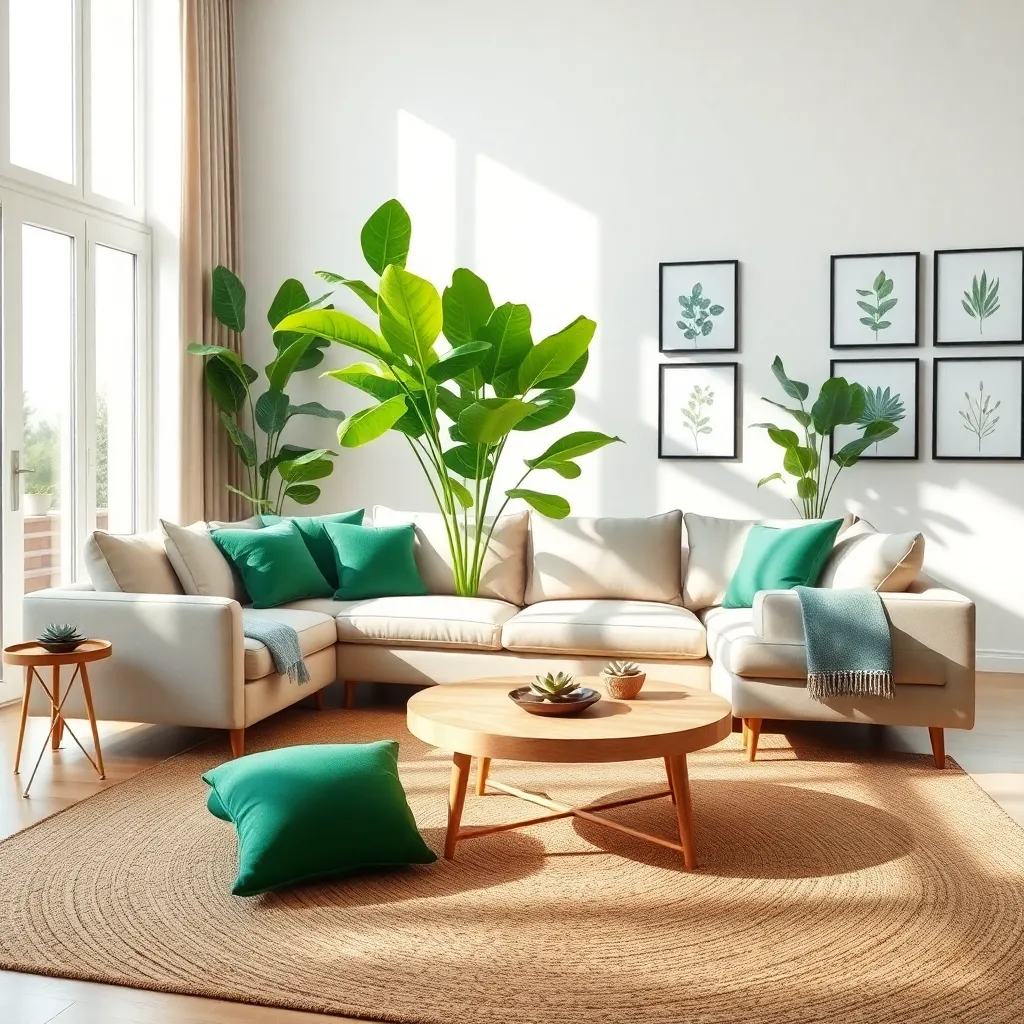
Creating a green focal point in your home can instantly elevate the ambiance of any room. Start by selecting a prominent spot, such as a mantelpiece, a coffee table, or a central wall, to ensure the greenery draws attention.
Consider the scale and proportion of the plants to the room size. A large fiddle leaf fig or monstera can become the centerpiece in a spacious living room, while smaller succulents or a hanging ivy might suit a cozy nook.
Experiment with different textures and heights to add visual interest. Combine tall, leafy plants with shorter succulents or trailing vines to create a dynamic display.
Choose planters and pots that complement your existing decor to seamlessly integrate the green focal point. Opt for materials like ceramic, terracotta, or metal, and select colors that either contrast or match your room’s palette for added cohesion.
For an advanced touch, incorporate lighting to highlight your green focal point, using spotlights or string lights for a softer glow. This not only enhances the plants’ appearance but also adds warmth and depth to the room.
Conclusion: Growing Success with These Plants
Incorporating greenery into your interior design not only enhances your living space but also nurtures relationships by creating a soothing and inviting environment. Throughout this article, we’ve explored six key concepts: understanding the emotional impact of plants, selecting varieties that reflect personal relationships, strategically placing greenery to foster connection, using plants to improve air quality and well-being, involving loved ones in plant care, and embracing greenery to symbolize growth and renewal in relationships.
As your next step, consider choosing one plant that resonates with you and your loved ones, and find a special place for it in your home. This small action can serve as a daily reminder of your commitment to nurturing your relationships.
Don’t forget to save or bookmark this article to revisit these concepts and continue enhancing your relationship journey. By integrating these simple yet powerful ideas, you are investing in a future filled with vibrant connections and shared joy. Remember, the effort you put into your environment today can lay the foundation for lasting relational success tomorrow. Embrace the opportunity to transform your space and your relationships—one plant at a time.
